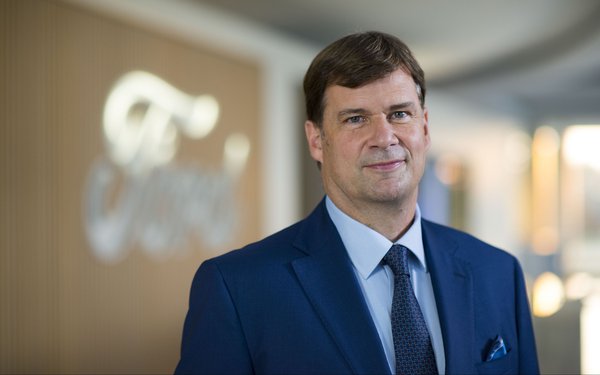
Ford Motor Co. CEO Jim Farley had some
strong words about the cost of advertising during a conference last week.
Farley, who was at Toyota and Lexus before joining Ford in 2007, talked about the success Tesla has
had without spending a dollar on advertising. Farley compared it to Scion, the Toyota brand he helped launch that was phased out after the 2016 model year.
Ford has done minimal
traditional advertising for its enormously successful F-150 Lightning and Mustang Mach-E electric vehicles, which are both sold out for the foreseeable future.
“I'm not
convinced we need public advertising,” Farley said, according to Seeking Alpha, which provided a transcript of the interview at the Bernstein 38th Annual
Strategic Decisions Conference. “We spend $600 to $700 on a vehicle to promote it, and we spend nothing post-warranty on the customer experience.”
advertisement
advertisement
The model for ad
spending is “messed up,” he says, adding that it would do more for customer satisfaction and loyalty to bring them in after a year for a “birthday” event where dealers would do
a complete detail of the vehicles including checking to make sure all the software is up to date.
“We should be doing stuff like that instead of doing Super Bowl
ads,” Farley says. “If you see a company doing -- if you ever see Ford Motor Company doing a Super Bowl ad on our electric vehicle, sell the stock.”
The remark was likely a
knock at cross-town rival General Motors, which has featured its EVs in spots during Super Bowl for two years running.
Farley looks to Tesla -- which does no consumer
advertising -- as an example of how automakers can make more money on electric vehicles vs. gas-powered models.
“We think our distribution model today is about $2,000
per unit, more expensive than Tesla,” he says. “About the third of that is inventory, we have all this inventory sitting around the dealers, in transit, got to get rid of all that. Public
advertising, another third, we spend $500 to $600 a vehicle on public advertising, get rid of all of it.”
One area Ford has already started saving money on is content in
vehicles like navigation systems.
“We lost the battle on content 10 years ago without knowing it,” Farley says. “Navigation, movies, music, we had no rights
to that. I told my team, stop it. Stop writing navigation systems, buying maps, let's just go to Google or Apple and make it easy for customers.”
Advanced Driver Assistance
Systems, which include technologies like pedestrian detection/avoidance, lane departure warning/correction, traffic sign recognition, automatic emergency braking and blind spot detection, are becoming
increasingly standard and expected by customers, so automakers will no longer be able to offer them for an up-charge.
“I think what we're seeing is, very specific things
are chargeable,” Farley says. “And you better have a very integrated, directed software, customer-facing software plus physical experience that will differentiate you in a long-lasting
way, or else it will be a commodity.”